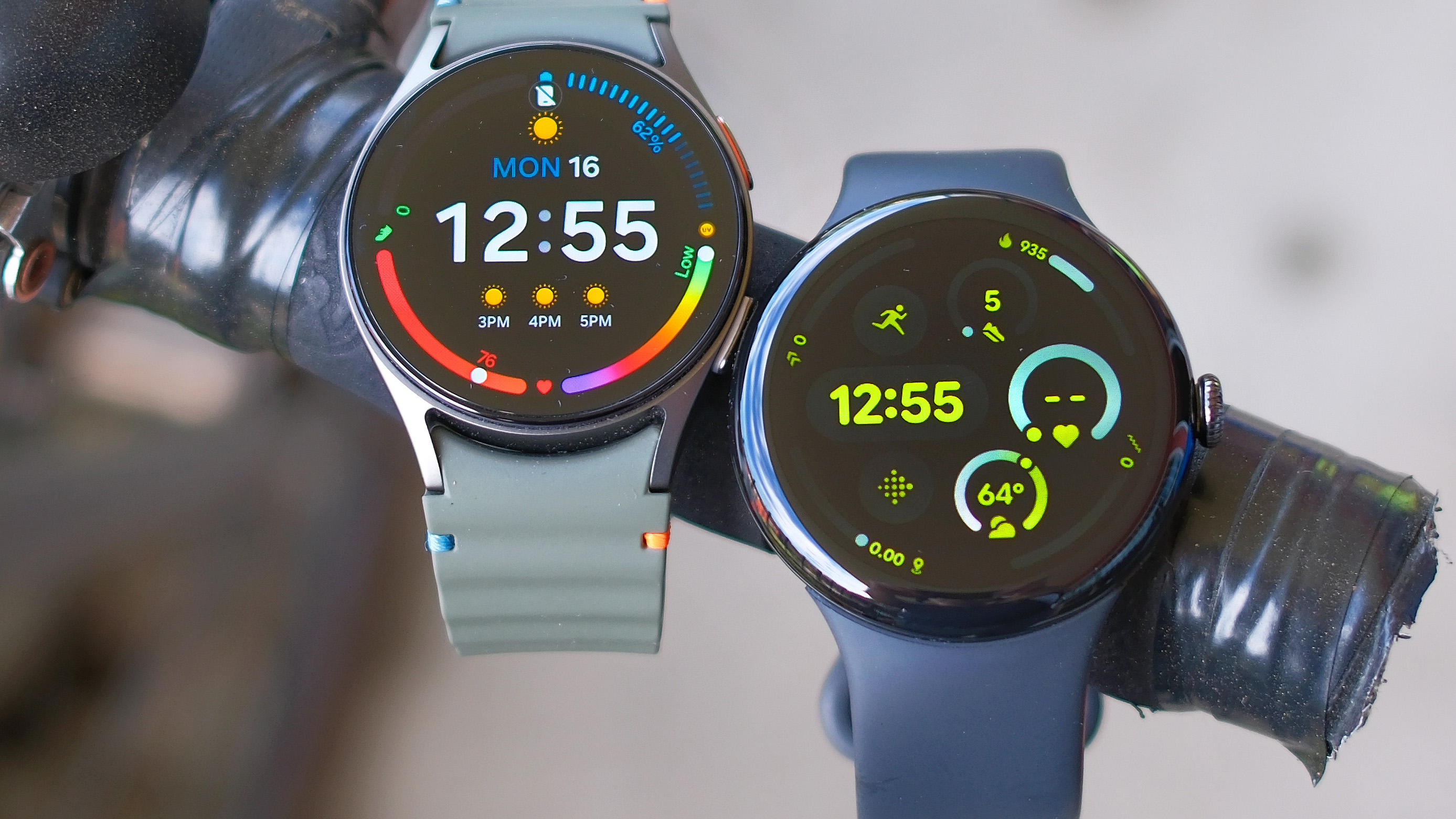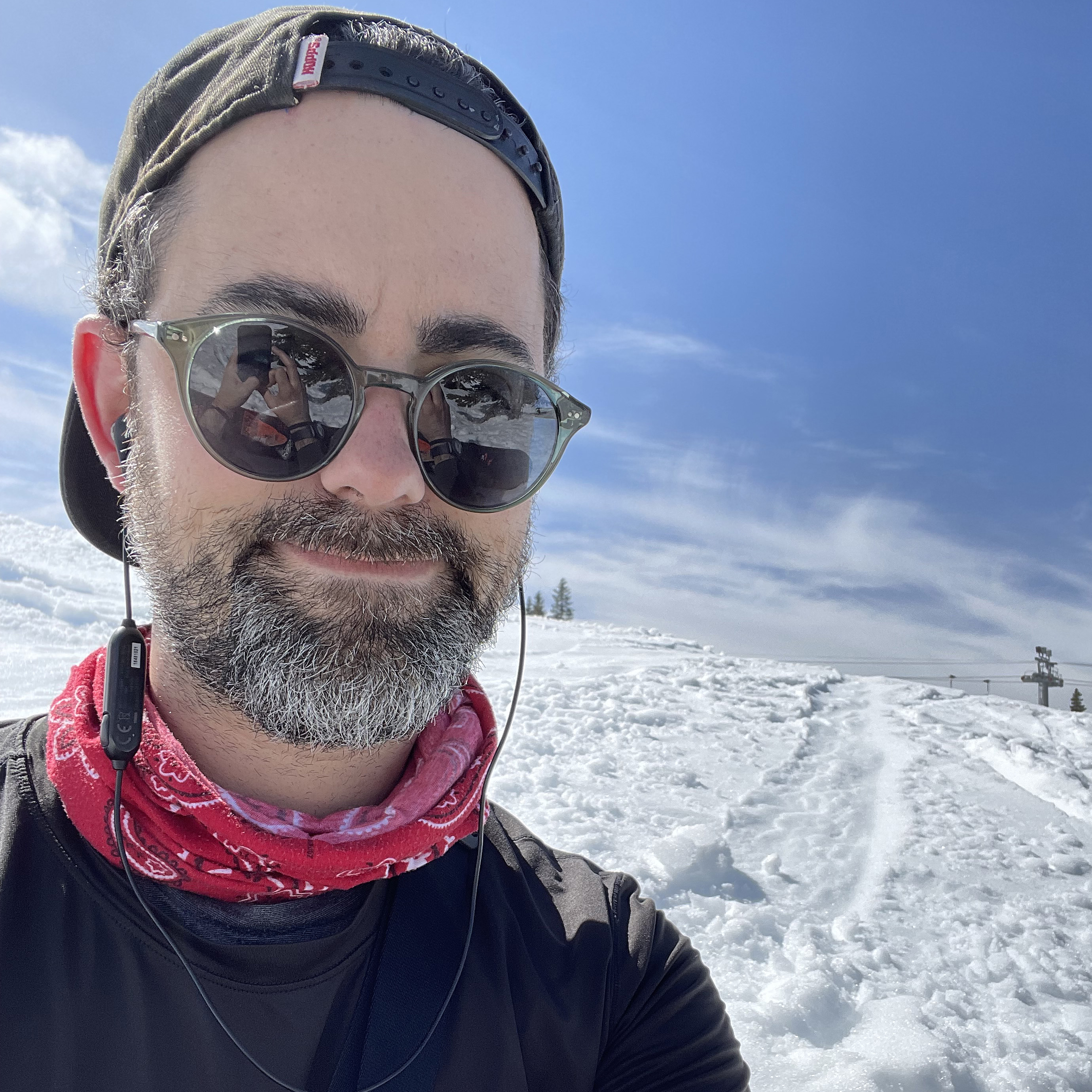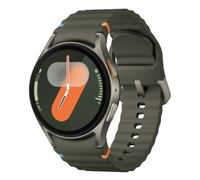I biked 9 miles wearing the Pixel Watch 3 vs. Galaxy Watch 7 — and the results surprised me
I tested the latest Android smartwatches

The Samsung Galaxy Watch 7 and Google Pixel Watch 3 are two of the best Android smartwatches you can buy right now and also two of the newest Wear OS devices on the market.
I tested both, and frankly, I have had a hard time choosing which I prefer; they're both comfortable, capable and stylish with lots of similar features and specs. While the Samsung Galaxy Watch is more affordable, the Google Pixel Watch (45mm version) is longer-lasting.
Hell-bent on breaking this mental deadlock, I decided to put these shiny new smartwatches to the test in a head-to-head showdown of fitness-tracking accuracy. Read on to see how the results from the Pixel Watch 3 vs. Galaxy Watch 7 compare after a 9-mile urban bike ride with 500-plus feet of hill climb.
Pixel Watch 3 vs. Galaxy Watch 7: Features
So how do these smartwatches stack up? For a detailed analysis, please read my Pixel Watch 3 vs. Samsung Galaxy Watch 7 comparison. For this article's purposes, I'll keep it brief. Both watches come in smaller and larger sizes with the option to add cellular connectivity for a bit more dough.
You get comprehensive wellness insights including details into sleep quality, workout recovery, menstrual health and more from both Samsung and Google. Design-wise, you're looking at a circular screen and a pair of physical controls along the case edge, regardless of which model you choose.
I prefer the digital crown on the Pixel Watch to the Galaxy Watch's two buttons, but that's mostly just because it's fun to play with.
While the Pixel Watch 3 in 41mm along with both Galaxy Watch 7 models offer roughly 24 hours of battery life, the larger Pixel Watch 3 lasts a whopping two days in my testing, which is the only major factor setting these watches apart, aside from price.
Sign up to get the BEST of Tom's Guide direct to your inbox.
Get instant access to breaking news, the hottest reviews, great deals and helpful tips.
Now, back to the bike test.
Samsung Galaxy Watch 7: starts at $299
The Galaxy Watch 7 boasts Samsung's best AI-backed wellness and workout tracking tech, advanced sleep analysis and flawless integration into the greater Galaxy ecosystem. It's also one of the easiest-wearing Android smartwatches on the market.
Google Pixel Watch 3: starts at $349
Want the best battery life for the buck from an Android smartwatch? The Pixel Watch 3 in 45mm is the move, lasting up to two days per charge. Plus, both the 41 and 45mm boast a comfortable and sleek design with plenty of health and workout tracking features.
Pixel Watch 3 vs. Galaxy Watch 7: Bike test
Onboard GPS comes standard in the Pixel Watch 3 and Galaxy Watch 7, and while both devices offer the option to piggyback off your smartphone's GPS for even better location tracking accuracy, I didn't use the function on either. The only other device I carried with an iPhone 12 Mini running the latest version of Strava as my control.
It's worth noting that I had to run this bike test twice — poor me — because after the first attempt, the results from the Samsung Galaxy Watch 7 managed to disappear into the ether.
My companion Samsung Galaxy S24 was dead when I returned home from the ride, so I saved my workout data on the Watch 7 and put the S24 on the charger. When I powered it up the next morning, my workout hadn't synced. Worse, the log of my bike ride was now gone from the smartwatch's records as well. Boo, Samsung.
Fortunately, the weather today in Seattle was a balmy 68 degrees Fahrenheit with clear skies, so I shed no tears taking full advantage of the sunny afternoon for the sake of this important scientific research.
With seaplanes buzzing, the work-from-home dogs strutting and the air thick with the scent of fresh-fallen pine needles, I took to my seven-speed and hit the mean streets of the Emerald City, whizzing past meandering tech workers, candy-colored kayakers, photo-snapping tourists, and many more dogs.
Pixel Watch 3 vs. Galaxy Watch 7: Bike test results
| Header Cell - Column 0 | Google Pixel Watch 3 | Samsung Galaxy Watch 7 | Strava |
|---|---|---|---|
| Total distance | 9.49 miles | 9.46 miles | 9.53 miles |
| Elevation gained | 548 feet | 537 feet | 524 feet |
| Average speed | 11.5 mph | 12.3 mph | 12.3 mph |
| Max speed | 25.1 mph | 24.7 mph | 24.9 mph |
| Average heart rate | 158 bpm | 160 bpm | n/a |
| Max heart rate | 174 bpm | 176 bpm | n/a |
| Calories burned | 615 calories | 511 calories | n/a |
Much to my surprise and delight, the results for my 9-mile ride match up quite nicely across the board, with no major outliers. All three devices recorded a total distance of roughly 9.5 miles and clocked a similar top speed for my ride of about 25 mph.
The Pixel Watch 3 and Galaxy Watch 7 noted slightly greater elevation gains than Strava recorded. The former gave me an additional 24 feet of hill climb, the latter blessed me with 13 feet. Either way, I'd rather have my smartwatch overestimate than underestimate this metric, which, next to distance, is the one I pay the most attention to.
Samsung and Strava clocked the same average speed for my ride while Google had me cruising about town an average of 0.8 mph slower. Reassuringly, the heart rate data for my ride is a near-match. By the way, the Pixel Watch 3 was on my left wrist and the Galaxy Watch 7 was on my right.
Lastly, Google has me burning roughly 100 more calories during my ride than the Samsung; however, of all the metrics captured, this is the one I tend to put the least value on as every manufacturer calculates it differently. Still, I like to view it as a rough estimate of my efforts rather than a hard data point.
Pixel Watch 3 vs. Galaxy Watch 7: Winner

For the first time in my Tom's Guide tenure testing smartwatches and fitness trackers while walking hiking and biking, we have ourselves a good old-fashioned tie.
Both the Samsung Galaxy Watch 7 and Google Pixel Watch 3 proved exceptionally competent at tracking all the most important workout stats during my recent 9-mile bike ride, from distance and speed data to heart rate and elevation stats.
Which smartwatches and/or fitness trackers should I test next? Let me know in the comments below.
More from Tom's Guide

Dan Bracaglia is the Tom’s Guide editorial lead for all things smartwatches, fitness trackers and outdoor gear. With 15 years of experience as a consumer technology journalist testing everything from Oura Rings to instant cameras, Dan is deeply passionate about helping readers save money and make informed purchasing decisions. In the past year alone, Dan has assessed major product releases from the likes of Apple, Garmin, Google, Samsung, Polar and many others.
An avid outdoor adventurer, Dan is based in the U.S. Pacific Northwest where he takes advantage of the beautiful surroundings every chance he gets. A lover of kayaking, hiking, swimming, biking, snowboarding and exploring, he also makes every effort to combine his day job with his passions. When not assessing the sleep tracking and heart rate accuracy of the latest tach gadgets, you can find him photographing Seattle’s vibrant underground music community.
-
Waxpatch That’s really close enough. Reading this article really makes me miss Galaxy Watch. I’ve switched to apple and it’s not as satisfying experience.Reply -
svedu I applaud your determination to get the comparative results and doing the long ride again. However, I see you have no established baseline to compare these results against. In other words, how accurate are the results put out by G/S watches compared to what the more accurate values are? You get the actual values by using calibrated medical equipment strapped up. They all may be fairly close, but without a baseline, any testing is not a valid test,IMHO.Reply -
DRC4444 Hi Dan,Reply
The difference in average speed - 11.5mph/Pixel 3 and 12.3mph/Galaxy 7/Strava - seems very wide, roughly 3.3 minutes over a 9.5 mile ride (49.6 minutes vs 46.3 minutes). Could it be that the Pixel was measuring total time while G7 and Strava were "pausing" when the bike was stopped, maybe at traffic lights? If this is not the case, am wondering how/why there would be such a large discrepancy (~7%) for a simple time and distance calculation.
Thank you for the review!!


